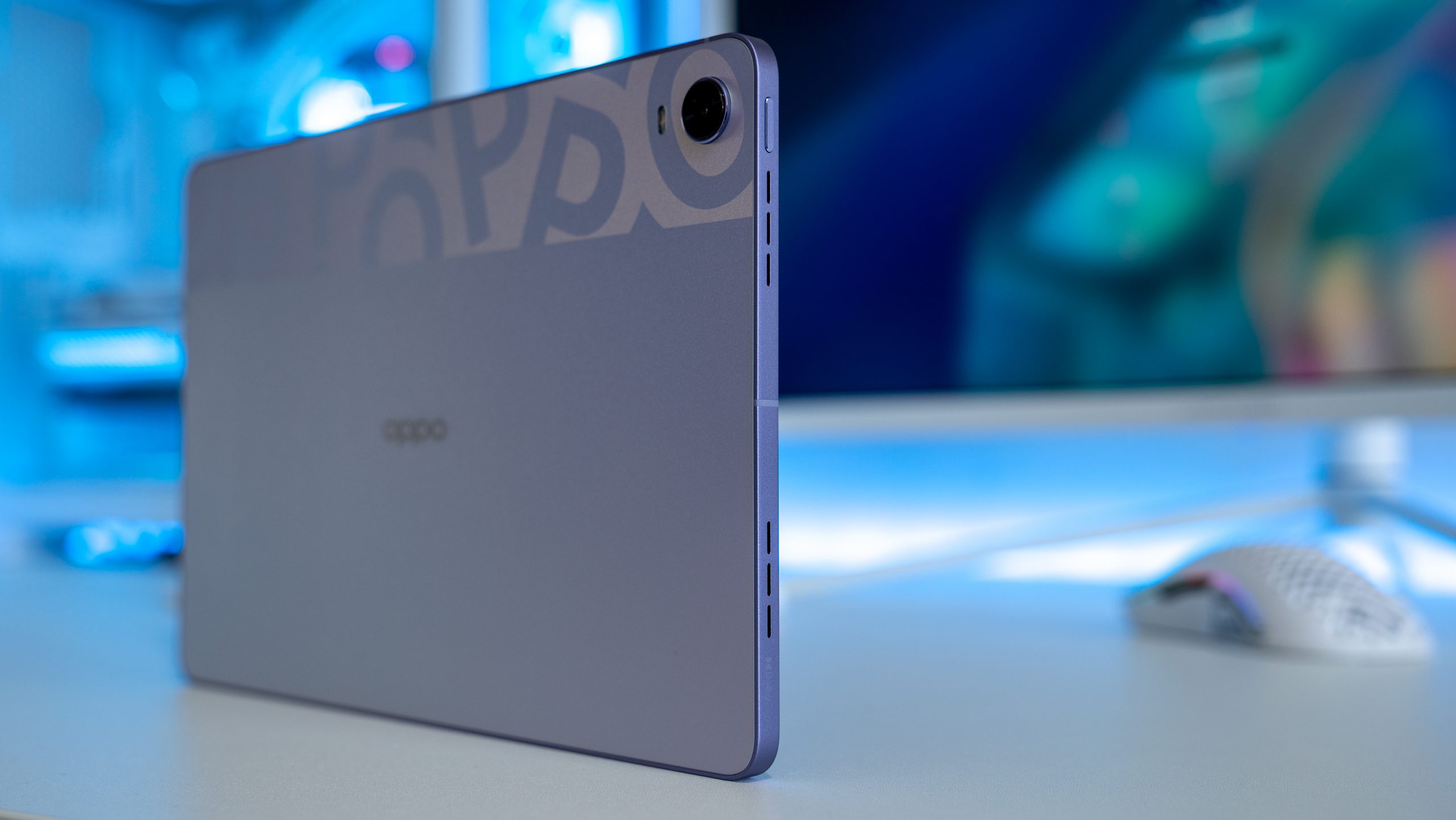Oppo Pad: Specs, Features, and Hands-On!
Back in March, Oppo released its Oppo Pad, an Android tablet that features a lot of great hardware specs for a price that borders between upper-midrange and flagship tablet territory. While the device’s spec sheet is certainly impressive, the highlight of the tablet is the Qualcomm Snapdragon 870 chipset and 120Hz display.
We have it here with us today, and for this one, we’re going to go over the hardware, specs, as well as a bit of hands-on with the device. In a day and age where tablets like the Apple iPad and Samsung’s Galaxy Tab series of tablets reign supreme, is the Oppo Pad a worthwhile contender? Let’s take a look.
Design and Display
Let’s start off with the display – the Oppo Pad features an 11-inch IPS display with a 1600×2560 pixel resolution, which is bright and maxes out at 480 nits. As we mentioned earlier, the display comes with a 120Hz refresh rate which is rather impressive, and makes scrolling through the UI feel fluid. Colours and contrast look good on the display, and while it’s no AMOLED panel, it manages to get the job done nicely.

The design on the Oppo Pad is something that you don’t usually see on a lot of tablets. While it adopts small bezels and a slim frame similar to modern tablet designs, the rear panel of the tablet features an interesting design choice, particularly the multitude of “Oppo” letters embedded onto the panel. There’s also a cool-looking paintjob on the device that produces a gradient when touched by light from a certain angle.
Other Hardware Features

On the back of the Oppo Pad is a 13-megapixel camera and LED flash, paired with an 8-megapixel front-facing camera built into the tablet’s bezel. There are also stereo speakers on the sides of the tablet, which makes it ideal from watching movies, streaming video content and other media playback features.
There are a few omissions as far as hardware features go, however. For one, there’s no microSD card slot, no 3.5mm headphone jack, and no sim card slot, as the Oppo Pad is Wi-Fi only. Powering the tablet is an 8360 mAh battery which you can charge through the USB-C port. The large battery is ideal for long gaming sessions and Netflix binges, and also supports 33W fast-charging.
Internals and Performance

Speaking of gaming, performance on the Oppo Pad is impressive thanks to the Snapdragon 870 5G chip, which still proves its worth as one of the best Qualcomm chips when it comes to speed and overall performance. The chip is impressive both on paper and in actual usage, and running your favourite games on the tablet should be no issue. Of course, it’s no SD 888 or 8 Gen 1, but it’s still a very capable chipset.
The tablet comes in several storage variants, and you can choose from either 128GB of internal storage and 6GB of RAM, 256GB of storage and 6GB of RAM, and 256GB of storage with 8GB of RAM.
Software
Out of the box, the tablet runs on Android 11 with ColorOS 12, Oppo’s custom Android interface. It would have been nice to see the tablet launch with Android 12, although we might see a software update for the device in the future.
If you’re used to ColorOS, then the UI does offer some customization options, as well as some additional proprietary apps. However, if you’re more used to devices with a more “stock” feel (similar to Google’s Pixel devices), then ColorOS might take some getting used to.
So Should You Get It?
If you’re looking for a tablet that comes with a Qualcomm Snapdragon 870 chipset, a fast and fluid 120Hz display, and large battery capacity, then the Oppo pad is a great consideration. While some design elements might be subjective, overall it’s a terrific device with some great specs. It does run on a heavily-skinned version of Android 11 though, which is definitely something to take into consideration. Otherwise, the specs sheet makes for one attractive device.
For more of the Geekiest Stuff on the internet, follow our official YouTube channel!